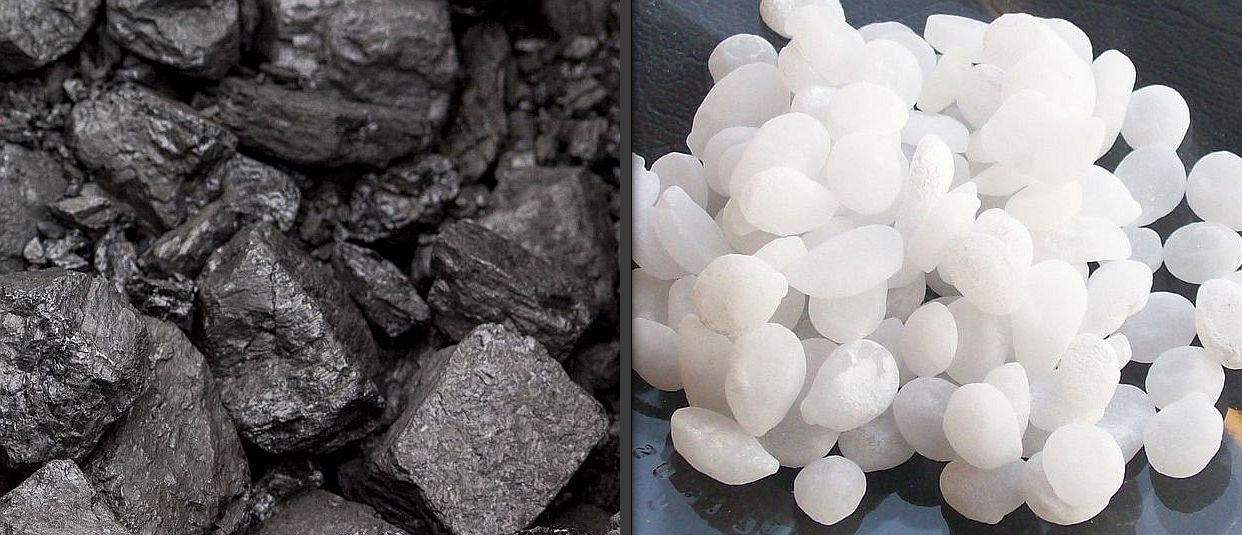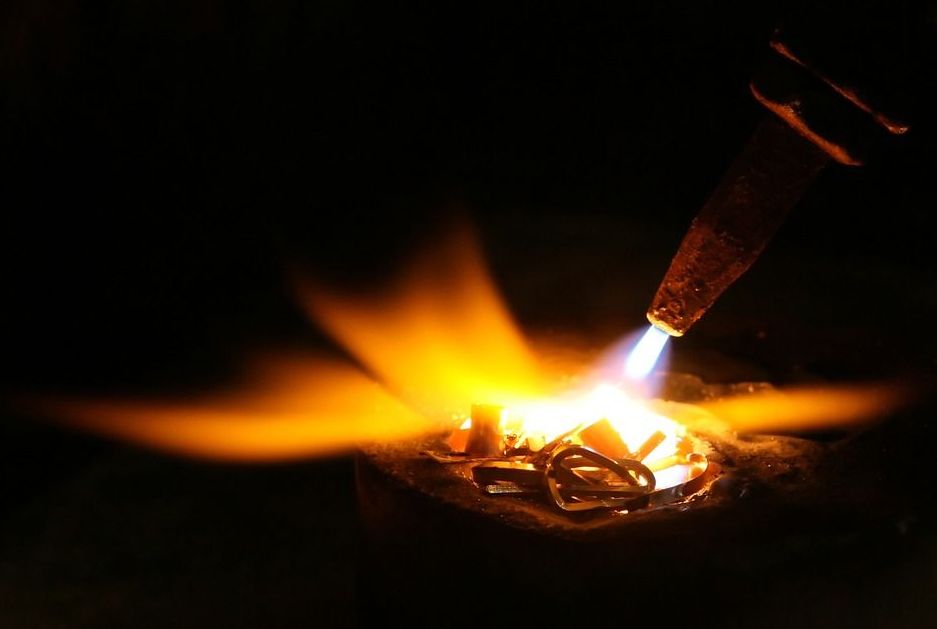
As a youth, I read whatever chemistry books I could get hold of. One made reference to an obscure synthesis of the liquid aromatic compound benzene from coal and lye, by means of heat. This reaction would seem to be an improbable one. Can a stoichiometric equation be written for such a synthesis? The answer is, Yes. This in itself does not guarantee the reaction can actually take place.
6 NaOH + 9 C → 3 Na2O + C6H6 + 3 CO
I learned of this synthesis from an old book, possibly published in the 1800s.
Coal and Lye – What Conditions?
Such a reaction strongly suggests isolation. The reaction required considerable heat. Also, air was to be excluded, since carbon would react preferentially with the oxygen in it. And likely an excess of carbon would be used to assure reaction completion.
C + O₂ → CO₂
Plus, any benzene that would tend to form would also react with gaseous oxygen according to the reaction,
C6H6 + 6 O2 → 6 CO2 + 3 H2O
Can anyone of our readers verify this is a valid method for the synthesis of benzene? And if it is valid, can he or she hazard a guess at the mechanism involved?

Reminiscent of Acetylene
It will be recalled that acetylene gas, used in an oxy-acetylene welding, has the chemical formula H–C≡C–H. It, too, can be made in a most interesting way—by the hydration of calcium carbide. First, calcium carbide is made in an electric furnace from lime (calcium oxide, CaO) and coke (C).
CaO + 3 C → CaC2 + CO
CaC2 + 2 H2O → H–C≡C–H + Ca(OH)2
Although early preparatory methods are more often than not replaced by more modern methods in the commercial world, and even in the laboratory, it would seem prudent to retain a written record of earlier successes. Potentially helpful data should always be archived, n’est-ce pas?
Note: You might also enjoy Spacecraft Invisibility: Is Cloaking Possible?

You should not think of coal as “C”. Instead it’s the residual mass from the slow metamorphisis of dead plants over a long period of pressure (and often heat). Depending on the type of coal (lignan, bitumen, anthracite) it contains more and more fused aromatic rings. Brown coals are largely made up of loosely connected aromatic rings with various types of connections (esters, ethers, etc) Look at Wikipedia to see some representative examples. When such a mass of organics is treated with concentrated hot NaOH, it is not that benzene is synthesized, but rather that the bonds to the aromatic cores are broken and benzene is released – along with toluene, xylenes, and all sorts of other chemicals. The benzene is then further purified by distillation.
An excellent comment. And very reasonable. As you no doubt noted in the article, I found the concept of coal to benzene in an old 1800s publication. And what you said, is doubtless an explanation, at least for the bulk of the benzene. But could some of it be from the hypothetical explanation that was provided? I suppose the only way to absolutely know is to attempt the reaction using pure carbon and just the right reaction conditions. Incidentally, what do you think of oil? You see, there are two strong theories of origin out there: 1. Plants, dinosaurs, etc., decomposing, and 2. The abiotic theory. Check my piece out on it here: The Origin of Crude Oil or Petroleum: Biotic or Abiotic?